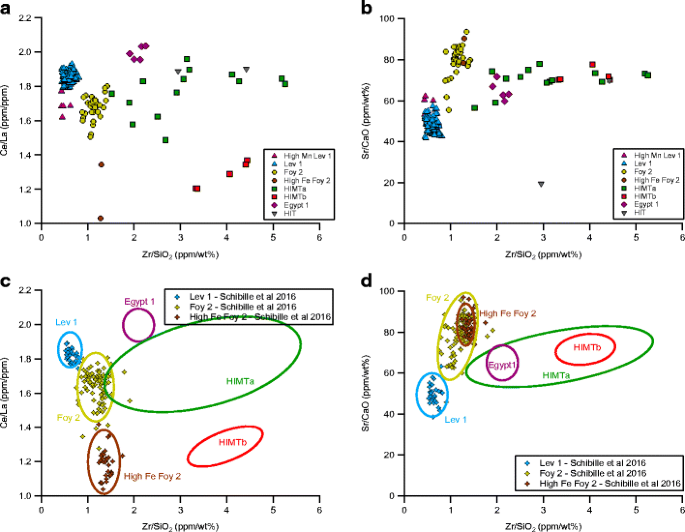

This is the common practice in ppm calculations.Ģ) Convert to ppm by multiplying numerator and denominator by 1000:Ġ.4008 g / 1000 g of solution times 1000/1000 = 400 g / 1,000,000 g of solution Note that the solution density is assumed to be 1.00 g/mL. Moles in one liter = mass/molar mass = 0.00289/522 = 5.5 x 10 -6 molĮxample #4: What is the ppm concentration of calcium ion in 0.010 M CaCO 3?ġ) Convert mol/L to to g/1000 g of solution:Ġ.010 mol/L times 40.08 g/mol = 0.4008 g/LĠ.4008 g/L = 0.4008 g / 1000 g of solution If you work out the mass per liter it makes working out the next steps a little easier, because the final units for molarity will be mol/L.ģ) Now using the molar mass to work out the molarity (moles per litre): Therefore 1 liter (L) of water is 1,000 g. If the solvent is water, we can assume the density at standard temperature and pressure is 1.0 g/mL.


What is the molarity of the solution?ġ) Unless specified otherwise, ppm usually refers to ppm by weight:Ģ.89 ppm = 2.89 g per 1,000,000 g (or any other weight unit, I have just chosen g for convenience)Ģ) Now you need to know the density of the solvent to convert the volume to mass. You might want to go back to problem #1 and try out 78 mg/L with the atomic weight of calcium ion expressed as mg/mol instead of g/mol.Įxample #3: A solution is labeled 2.89 ppm and is made with a solute that has molar mass equal to 522 g/mol. The best way to explain this is by doing some examples.Įxample #1: Convert 78.0 ppm of Ca 2+ ions to mol/Lġ) By the last definition of ppm just above:ħ8.0 ppm = 78 mg Ca 2+ / L of solution = 0.0780 g/LĢ) Divide by the atomic weight for calcium ion:Ġ.0780 g/L / 40.08 g/mol = 0.00195 mol/L (to three sig figs)Įxample #2: Calculate the molarity of a dye concentration given the molar mass is of the dye 327 g/mol and a dye concentration of 2 ppm.ġ) Convert ppm to a gram-based concentration:Ģa) Using 0.002 g/L, caculate the molarity:Ġ.002 g/L divided by 327 g/mol = 6.1 x 10 -6 MĢ mg/L divided by 327,000 mg/mol = 6.1 x 10 -6 M This last one works because the solution concentration is so low that we can assume the solution density to be 1.00 g/mL.Īlso, it's this last modification of ppm (the mg/L one) that allows us to go to molarity (which has units of mol/L). Now, divide both values by 1000 to get a new definition for ppm: We'd love to keep you informed about what is going on at Sequoia, and how our users and customers deploy and use their LISST instruments and other Sequoia products.įor that purpose, we maintain a mailing list.ChemTeam: Converting between "ppm" and molarity Converting between "ppm" and molarity When ppm is used as a measure for the suspended particle concentration, it is therefore very important to specify if the concentrations are ppm BY VOLUME or ppm BY MASS, to facilitate comparisons with data where the concentrations are reported in µl/l or mg/l.ĭo you have a need for an instrument that can measure particle concentration? Have a look at our LISST-Portable|XR laser for laboratory use, our LISST-200X laser for field and submersible use, or our LISST-AOBS that measures concentration using acoustics. For example, a sample with a mass concentration of 100 mg/l will have a volume concentration of 38 µl/l. To convert from ppm by mass to ppm by volume, divide by the density of the particles. For example, a sample with a volume concentration of 25 µl/l will have a mass concentration of 25*2.65 = 66 mg/l.

For mineral grains (clay, silt and sand sizes), this will typically be 2.65 g/cm3. To convert from ppm by volume to ppm by mass, multiply by the density of the particles. However, if ppm is expressed as THE MASS of particles in a unit volume of water, then ppm BY MASS is equal to mg/l. If ppm is expressed as THE VOLUME of particles to a unit volume of water, then ppm BY VOLUME is equal to µl/l. But what parts? The amount of particles in a suspension can be expressed as the total volume OR total mass of particles in a unit volume of water AND THESE TWO NUMBERS WILL ONLY BE THE SAME IF THE DENSITY OF THE PARTICLES IS 1 g/cm3.


 0 kommentar(er)
0 kommentar(er)
